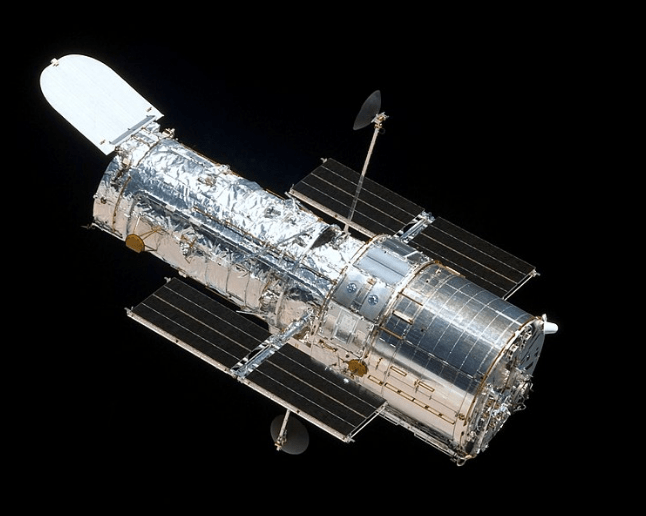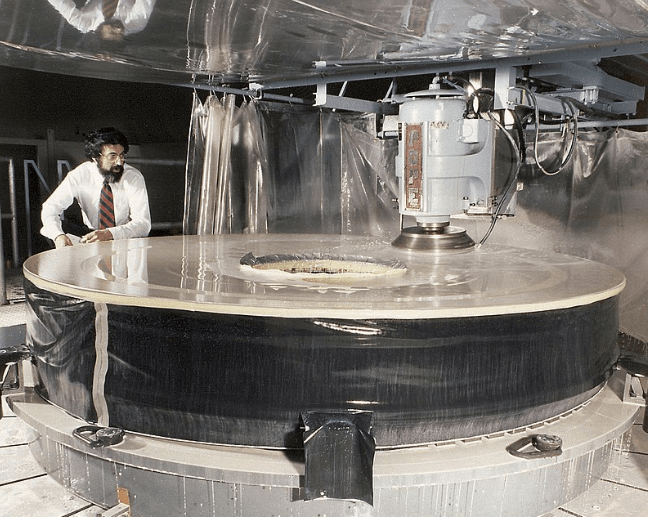The Hubble Space Telescope was launched in the low earth orbit in 1990. It remains in operation and has collected a significant amount of information over the years, allowing scientists and researchers to come close to discovering the secrets of outer space. Although it is not the first telescope sent to space but is one of the most versatile and largest research tools in space. The making of the Hubble Space Telescope cost $4.7 billion and has helped capture perhaps the most stunning images of the galaxies and cosmos known to mankind.
History of Hubble Space Telescope
Named after astronomer Edwin Hubble. The history of the Hubble Space Telescope can be traced back to 1946. Astronomer Lyman Spitzer shared the idea of having an extraterrestrial observatory in space. His paper highlighted two major advantages of having a space observatory.
The first, was the angular resolution. At the time, the ground telescopes were limited when it came to resolutions capturing at only 0.5-1.0 arcseconds. However, the Hubble Space Telescope’s only limitation was diffraction. Secondly, a space-based telescope could observe both ultraviolet and infrared light, absorbed by the earth’s atmosphere.
As a result, Spitzer spent most of this career planning and pushing the concerned authorities to develop a space telescope. Then in 1962, a report released by the U.S National Academy of Sciences shared the advantages of developing a space telescope as part of the space program. The plan was approved and in 1962, Spitzer was appointed as the head of the project, tasked with defining space objectives.
Funding
It was not NASA’s first time sending a telescope in space. Shortly after World War II, scientists and researchers picked up on astronomy and shifted their attention to rocket technology. The aim was to build better and long-lasting space telescopes over the years. NASA in 1946 was able to obtain the sun’s first ultraviolet spectrum of the sun.
Following the launch, NASA yet again launched the Orbiting Solar Observatory in 1962 to collect X-ray, UV, and gamma-ray spectra. Following the launch, the United Kingdom also launched an orbiting solar telescope in 1962. Finally, in 1966, NASA had launched the first Orbiting Astronomical Observatory mission. Unfortunately, the battery of the OAO-1 failed after three days of the launch and the mission was terminated.
NASA then launched the Orbital Astronomical Observatory 2 that captured the ultraviolet observations of galaxies and stars from 1968 to 1972. Originally, the telescope was designed to remain in outer space for a year but it exceeded everyone’s expectations by performing beyond the planned lifetime.
Considering the amount of data collected, NASA developed a firm plan to develop a space-based telescope in 1968 called the Large Space Telescope or Large Orbiting Telescope. The launch was planned for 1979. And since the telescope was bound to be expensive, the need for crewed maintenance missions was also considered to ensure the telescope’s longevity.
Meanwhile, the OAO program was a huge success and helped develop a consensus amongst the astronomical community that LST development is important. As a result, NASA in 1970 established two committees that were tasked with the engineering of the telescope project and determined the mission’s scientific goals.
Once these tasks were completed, NASA would then be searching for funds, keeping in mind that the LST would be comparatively a lot more expensive than the earth-based telescope. The U.S Congress at the time proposed to cut some expenditures that were related to detailed studies of the hardware and instruments of the telescope. However, the public spending cuts in 1974, resulted in Congress snatching all the funds planned for the telescope.
Although the funds had been deleted but this did not stop the astronomers from running a lobbying effort. Therefore, many senators, congressmen were met by astronomers who also ran successful letter-writing campaigns. As a result, the Senate agreed to approve half the budget of the original Congress-approved budget. The reduced budget meant that astronomers had to cut down on certain expenditures, which reduce the diameter of the proposed mirror. Now the aim was to build compact hardware for the telescope.
NASA joined hands with the European Space Agency that provided solar cells for powering the telescope along with staff to work alongside the United States. Needless to say, the European Space Agency offered as much contribution to NASA as NASA offered itself towards the development of the Hubble Telescope.
Observing the progress being made, congress further approved US$36 million allowing the designing process to begin as soon as possible. With the launch date set for 1983, the telescope was named after Edwin Hubble who confirmed that the universe is expanding.
Flawed Mirror
Within weeks of the launch, the astronomers and scientists observed that the telescope was not capturing high-quality images. Although they were much better than the earth-based telescopes, they were not up to mark as expected by the team. This was due to the flawed mirror on the telescope restricting its sharp focus. As the team worked on determining the problem, it was found that the primary mirror was polished to the wrong shape.
Even though the mirror was thought to be one of the most precisely figure optical mirrors ever in history, the difference led to a flaw in the light’s reflection. Instead of the light focusing on the center, it bounced off from a different angle. Now that the telescope was in space and the cost associated to fix the flawed mirror would be too much, astronomers handled the situation by utilizing complicated image processing techniques.
A detailed investigation into the matter revealed that Perkin-Elmer who NASA commissioned to create the mirror did not employ the best optical scientists for the task. As a result, upon NASA’s heavy criticism, the relationship with Perkin-Elmer was severely strained. However, NASA was also blamed for not being able to capture quality control shortcomings.
Important Discoveries
Age of the Universe
The Hubble Telescope was designed to also measure the rate at which the universe was expanding, which helped the astronomers determine its age. Before its launch, the estimates received had errors of up to 50%. However, Hubble’s measurements of the Cepheid variables existing in the Virgo Cluster and other galaxy clusters were +/- 10% accurate. As of today, it is estimated that the age of the universe is around 13.7 billion years.
Expansion of the Universe
Before the launch of the Hubble telescope, astronomers used earth-based telescopes along with other techniques to conclude that the earth was not expanding. This created a lot of confusion about its future. However, the Hubble shared enough evidence leading the astronomers to believe that the universe is infact expanding. Even though the astronomers have not found the exact cause of this acceleration, dark energy tends to be the most probable cause.
Black Holes
The Hubble Space Telescope played a crucial role in determining that black holes are mostly present in the centers of the galaxies. Over the years, scientists and astronomers have been working to find out the exact location and number of existing black holes. While that remains unknown, the discovery of close relationships between galaxies and their central black holes serves as yet another important discovery.
Future
Since the Hubble operates in the upper atmosphere, which is extremely tenuous, the drag causes its orbit to decay. If not reboosted when required, the telescope could re-enter the earth’s atmosphere within decades. It mostly depends on the activity of the sun and its impact on the upper atmosphere.
If the telescope was to enter the earth’s atmosphere uncontrolled, it would result in human and structure casualties. To avoid such a situation, NASA extended the service contract for the Hubble until June 2021. NASA had planned to use a Space Shuttle to bring the Telescope back and display it at the Smithsonian Institution.
However, since the Space Shuttle had retired and the cost and the risk of sending the crew were significantly large, the idea was disposed. As a result, NASA installed the Soft Capture Mechanism that works with the Relative Navigation System to allow the telescope to consider several options before safely de-orbiting.
Final Word
The Hubble Telescope is unarguably one of the biggest mankind inventions in history. It has led scientists and astronomers to discover black holes, the age of the universe along with galaxies. Although NASA estimates that the natural atmospheric re-entry will occur between 2028 and 2040, the replacement of the Hubble is already underway. Only time will tell if it can capture and lead the astronomers to even greater discoveries.




